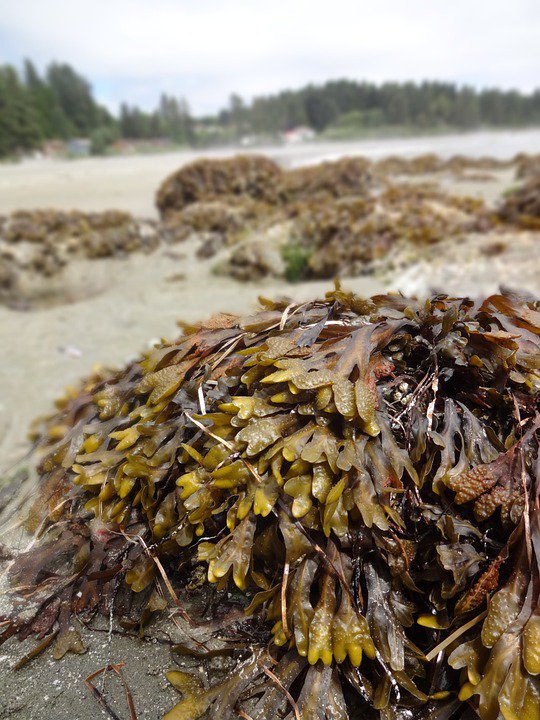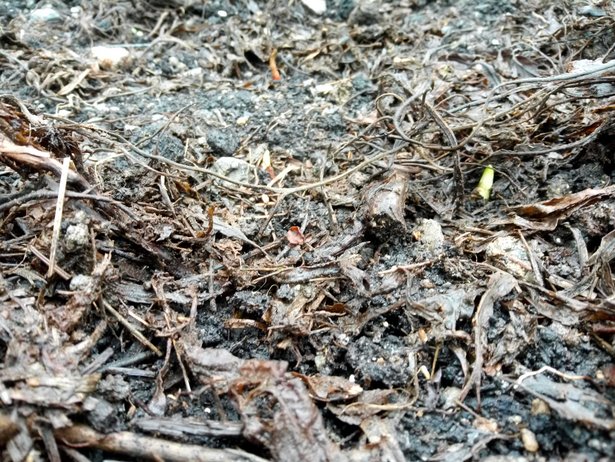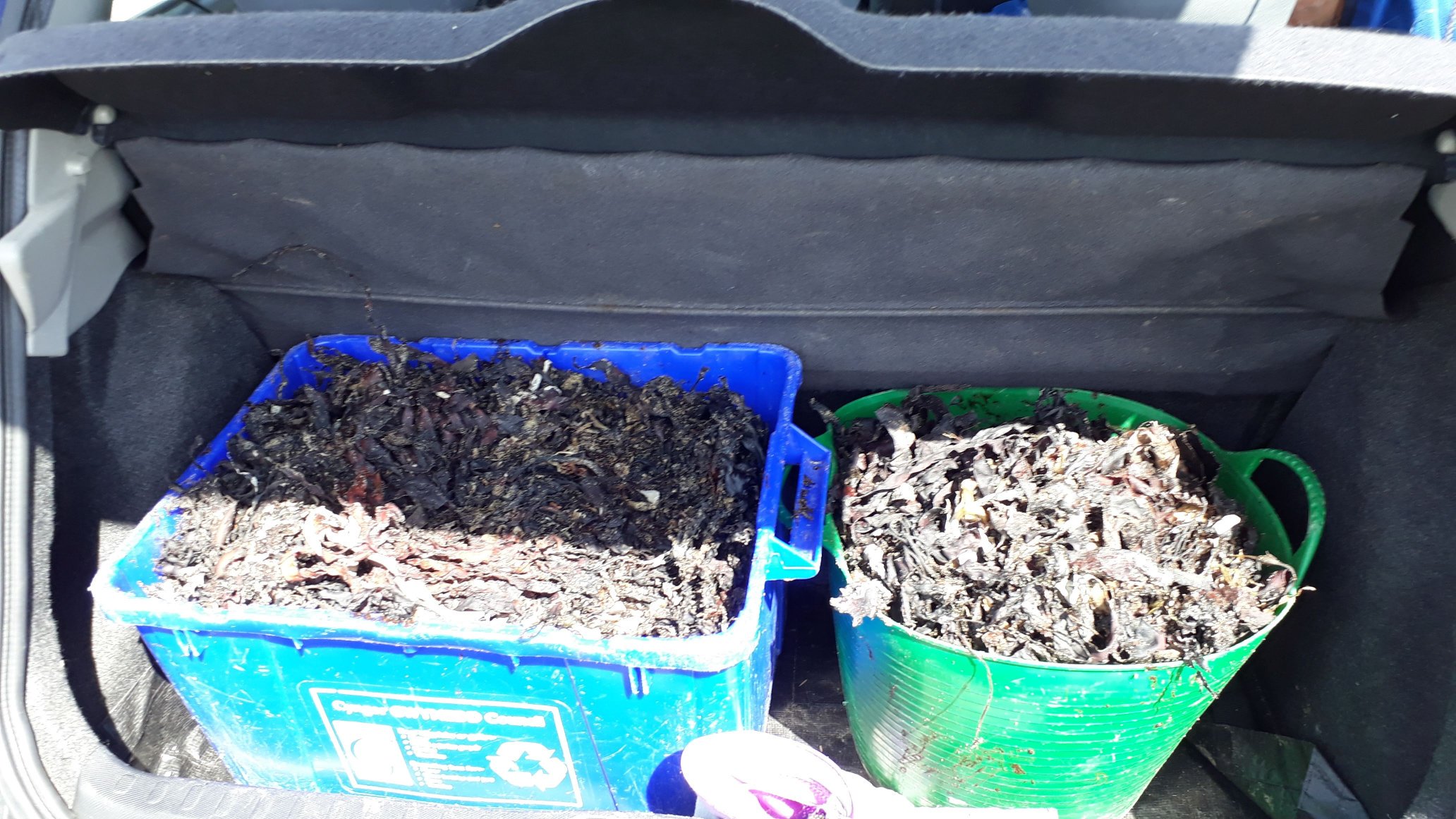
Today, we’re embarking on a journey of exploration into a unique method that has gained popularity among horticulture enthusiasts – “Seaweed Mulch for Tomatoes.” This method harnesses the inherent properties of seaweed to provide tomato plants with a treasure trove of nutrients, enhance soil vitality, and reduce reliance on chemical fertilizers or pesticides. Within this comprehensive guide, we will explore the remarkable potential of seaweed mulch and its capacity to take your tomato gardening to a whole new level.
Table of Contents
Can You Mulch Tomatoes With Seaweed?
Using seaweed as mulch for tomatoes is a fantastic way to boost plant health and yield. Seaweed offers a natural source of essential nutrients, such as potassium, calcium, and magnesium, which tomatoes adore. This nutrient-rich mulch acts as a protective layer, enhancing the soil while deterring weeds and pests.
Benefits Of Using Seaweed Mulch For Tomatoes

The advantages of seaweed mulch for tomatoes are numerous:
Nutrient-Rich Soil
Seaweed mulch acts as a natural nutrient powerhouse for the soil in which your tomatoes thrive. Enriched with essential minerals, including potassium, calcium, and magnesium, seaweed mulch offers a robust and balanced nutrient profile. These minerals are key players in the growth and development of your tomato plants. Potassium, for instance, supports overall plant health and fruit development, calcium fortifies cell walls, and magnesium plays a crucial role in chlorophyll production. By infusing the soil with these vital elements, seaweed mulch sets the stage for healthy, vigorous tomato growth, ultimately leading to a more abundant harvest.
Weed Suppression
Unwanted weeds are a persistent headache for gardeners, sapping nutrients and water from your precious tomato plants. However, with seaweed mulch, you can bid farewell to this nuisance. The dense and moisture-retentive nature of seaweed mulch acts as a natural barrier, preventing weed growth and reducing competition for resources. This means less time spent weeding and more time enjoying the fruits of your labor.
Natural Pest Control
One of the most remarkable features of seaweed mulch is its ability to act as a natural deterrent against certain pests. While your tomato plants enjoy the benefits of this nutrient-rich mulch, pests like aphids and slugs are less than thrilled by its presence. Seaweed’s natural compounds create an environment that makes it challenging for these pests to thrive. By using seaweed mulch, you can significantly reduce the need for chemical pesticides and opt for a more eco-friendly and balanced approach to pest management in your garden.
Enhanced Tomato Flavor
Gardeners often report that tomatoes grown with seaweed mulch boast a more intense and delightful flavor. This improvement in taste can be attributed to the superior nutrition provided by the mulch, resulting in more vibrant and succulent fruit. The balance of essential minerals not only encourages tomato growth but also contributes to the development of more robust and flavorsome fruit. So, if you’re seeking tomatoes that burst with exceptional taste, seaweed mulch might just be the secret ingredient your garden needs.
How to Use Seaweed Mulch for Tomatoes

Using seaweed mulch for tomatoes is simple:
Step 1: Gather Seaweed
Begin by collecting seaweed, which can be either fresh or dried. Ensure that the seaweed is free of salt and debris. You can typically find seaweed washed up on beaches or in shallow coastal waters.
Step 2: Rinse and Dry
If you’ve opted for fresh seaweed, it’s important to rinse it thoroughly with fresh water. This rinsing process removes excess salt, which can be detrimental to your tomato plants. After rinsing, allow the seaweed to dry completely. This step is crucial to prevent excess moisture from reaching your plants.
Step 3: Apply to Base
Once your seaweed is clean and dry, it’s time to apply it to the base of your tomato plants. Create a generous layer of seaweed mulch, but take care to ensure it doesn’t come into direct contact with the stems of the plants. Leave a small gap around the base to prevent potential moisture-related issues.
Step 4: Maintain Thickness
To achieve optimal results, maintain a thickness of about 2-3 inches of seaweed mulch. This depth provides effective coverage to protect the soil, retain moisture, and deter weeds while supplying essential nutrients to your tomato plants.
Step 5: Complement with Other Mulch
For an even more effective and tailored approach, consider combining seaweed mulch with other materials. Materials such as straw or compost can enhance the performance of the seaweed mulch, providing a well-rounded mulching experience for your tomato plants. This combination can contribute to better soil insulation and moisture retention.
Best Seaweed Mulch for Tomatoes
The choice of the best seaweed mulch for your tomato plants hinges on the type of seaweed accessible in your area. Among the available options, three seaweed varieties—kelp, rockweed, and bladderwrack—stand out as popular choices, each bringing its unique set of advantages to the table.
Kelp: The Ocean’s Superfood
Kelp, a type of brown seaweed, is often recognized as the king of seaweed mulches. Its exceptional nutrient content is a game-changer for tomato plants. Kelp is packed with essential minerals, such as potassium, which plays a vital role in fruit development. Additionally, it contains a cocktail of other nutrients that promote healthy plant growth. If you’re looking for an all-in-one seaweed mulch that provides robust nourishment, kelp is the choice for you.
Rockweed: Natural Insulation
Rockweed, also known as bladderwrack, is an excellent choice for gardeners seeking natural insulation for their tomato plants. This seaweed variety acts as a protective barrier, shielding your tomatoes from temperature extremes. Its insulating properties help maintain consistent soil temperatures, ensuring your tomatoes remain comfortable and stress-free even in unpredictable weather conditions.
Bladderwrack: Versatile and Beneficial
Bladderwrack is a seaweed variety that excels in versatility. It can serve multiple roles in your garden. Apart from its primary function as a mulch, it can be utilized for composting, making it a sustainable option for those who want to close the loop in their gardening practices. Bladderwrack’s adaptability and resourcefulness make it a seaweed mulch worth considering.
When choosing the best seaweed mulch for your tomatoes, assess your garden’s unique requirements and the seaweed varieties available in your vicinity.
Conclusion
In conclusion, seaweed mulch for tomatoes is a game-changer in tomato gardening. It’s a natural, eco-friendly way to nurture your plants, enrich your soil, and boost tomato flavor. So, try using seaweed mulch and watch your tomato garden flourish like never before!
